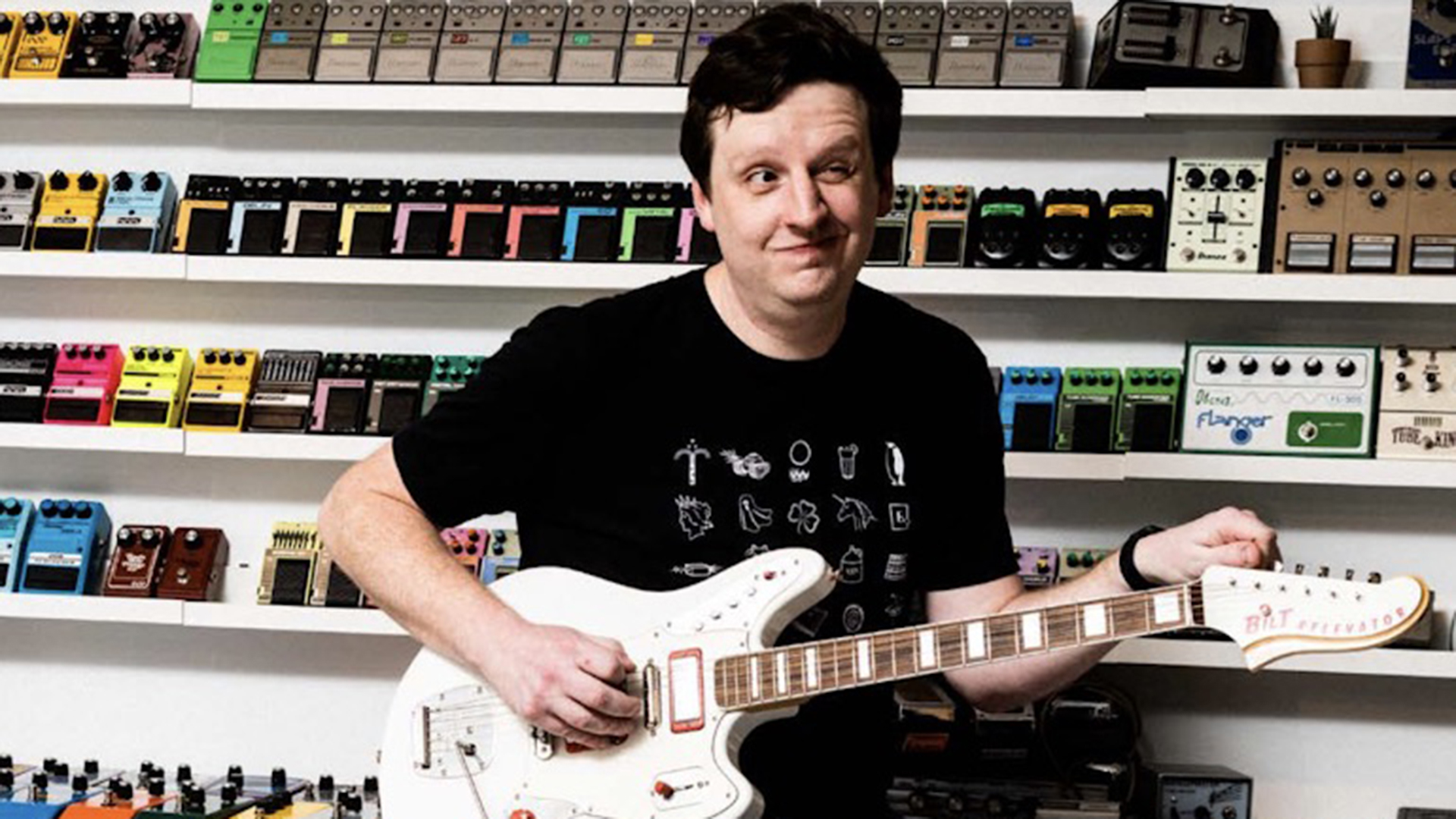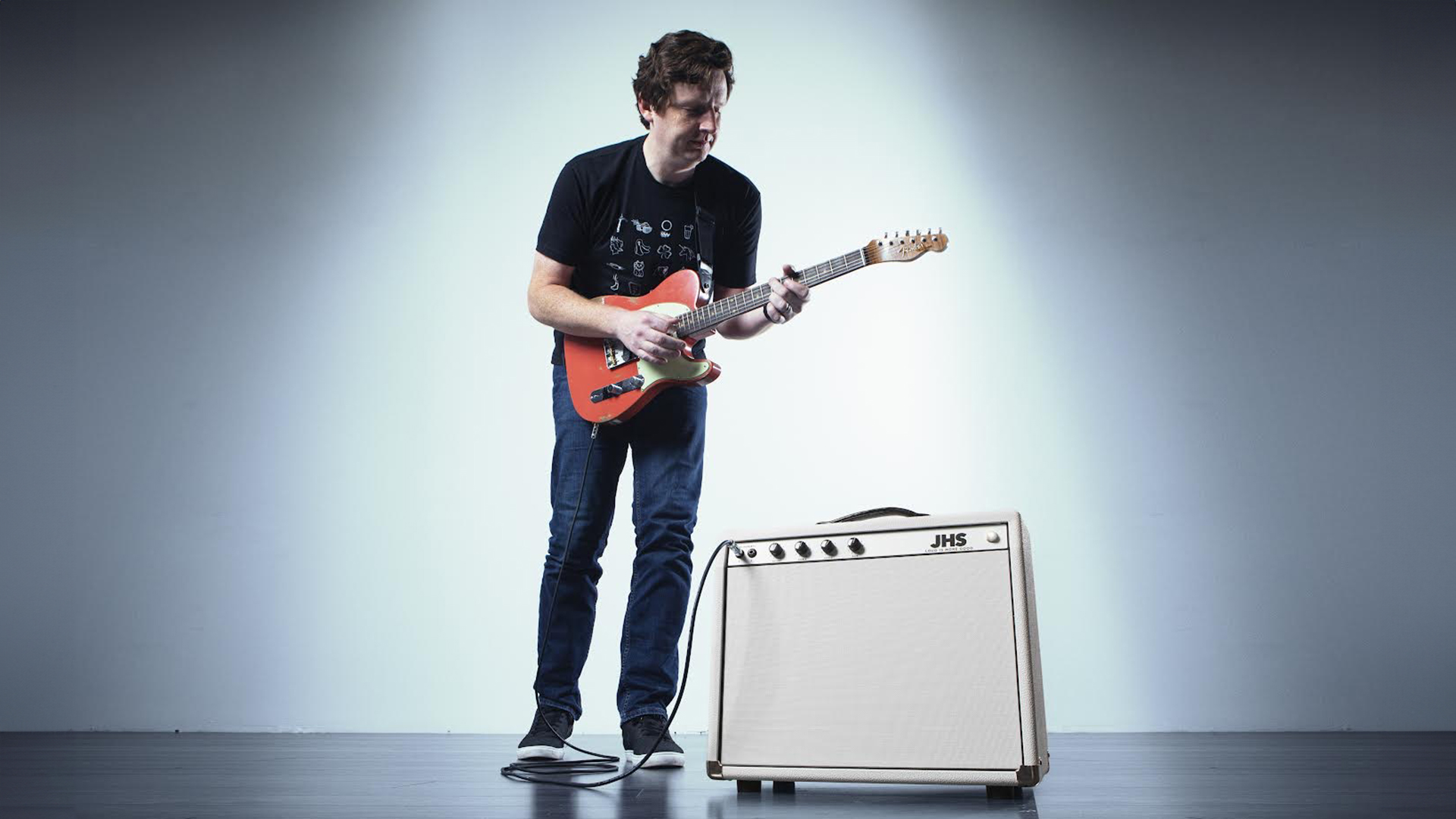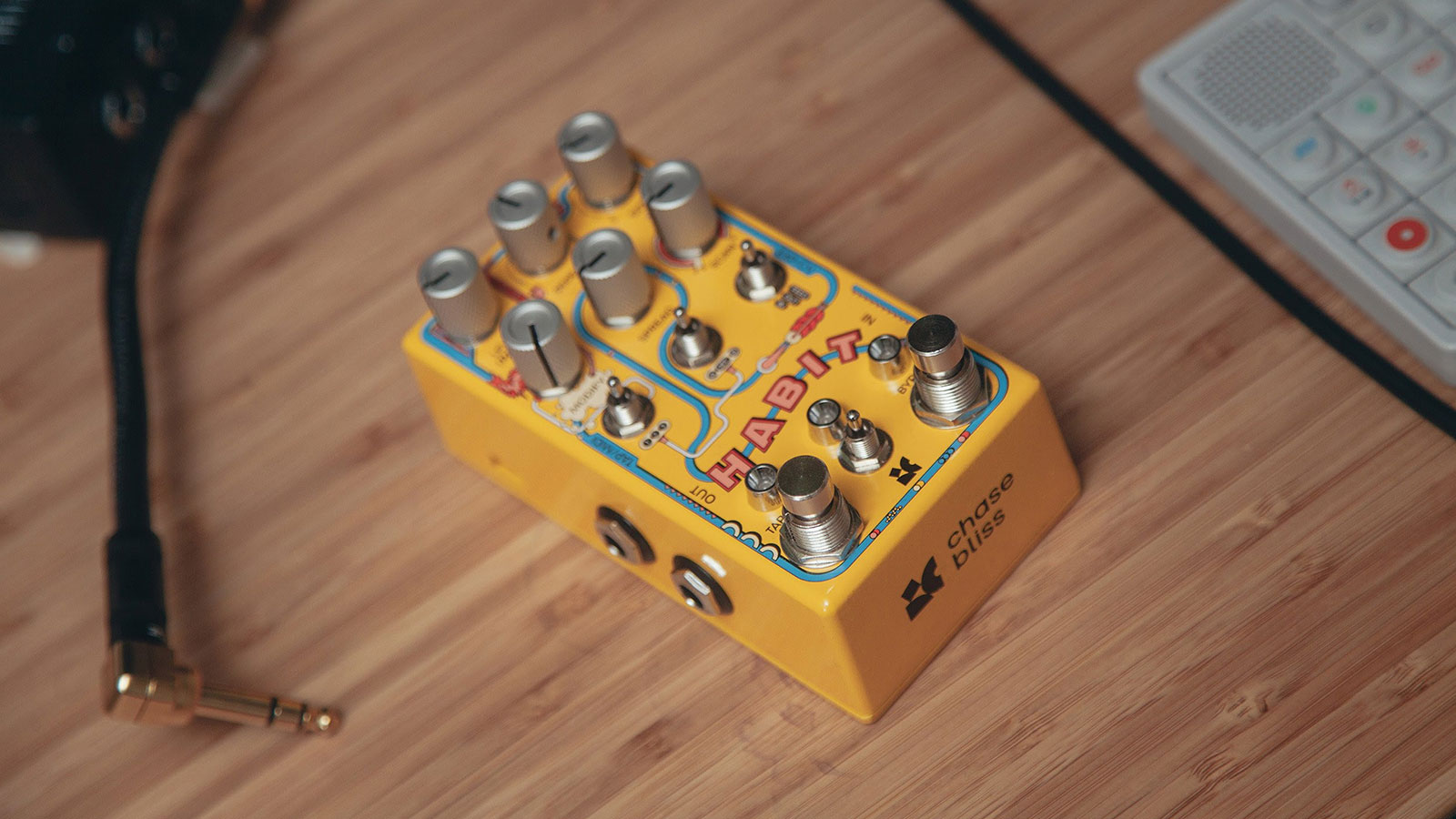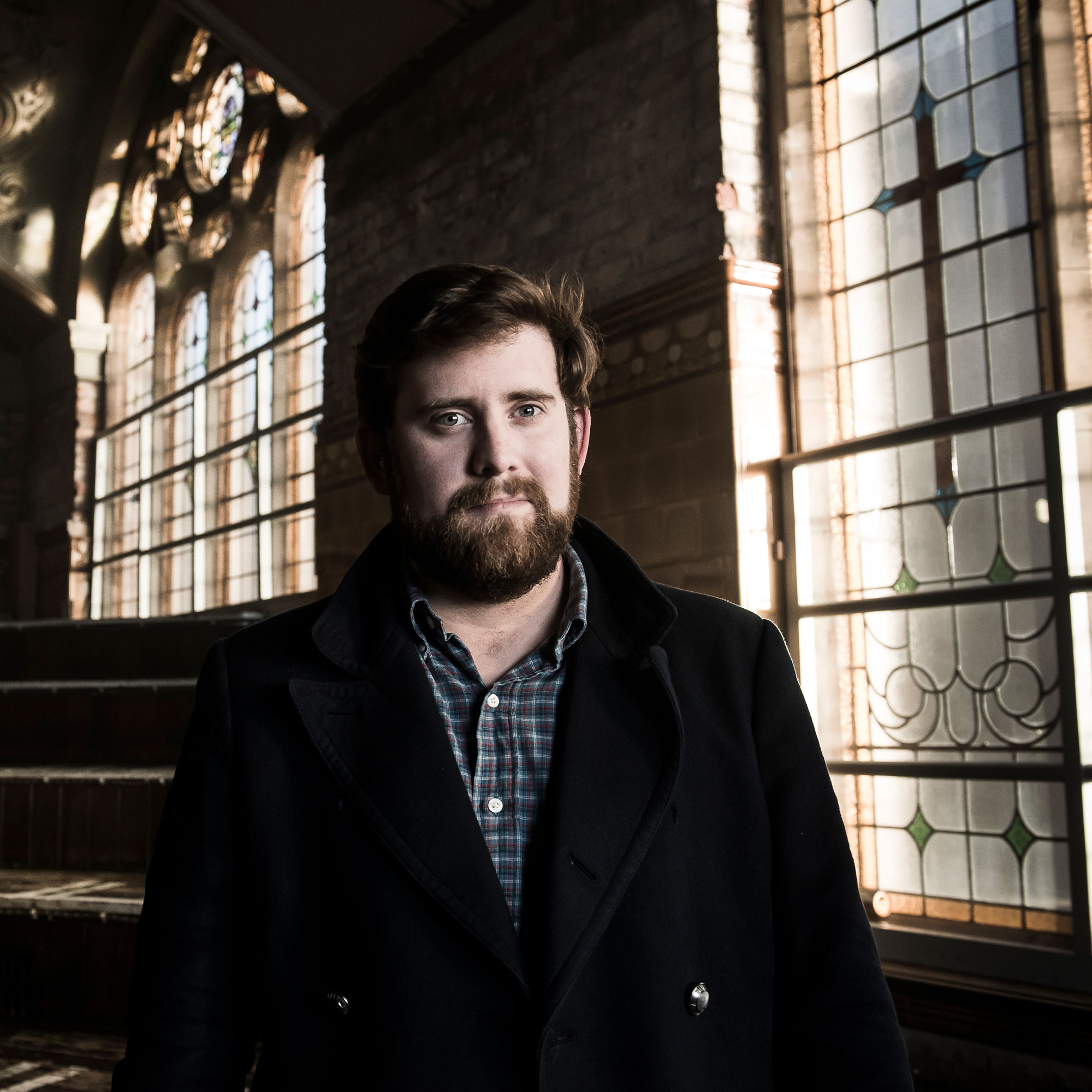“You have to be secure in yourself. I'm not intimidated to tell you to buy a Keeley pedal. If that tears my business apart, then my business sucks”: How Josh Scott built one of the world’s leading pedal firms by recommending his rivals
The JHS founder has become the internet’s go-to pedal guru. He tells GW about his pre-pedal days as a pawn-shop gear flipper, the Bad Monkey bubble – and the key to finding genuinely new guitar sounds

Josh Scott has built one of the most successful independent pedal firms in the world by giving away his knowledge and recommending his rivals. Instead of being laughed out of the industry, it’s made him a hero to indie builders, a trusted resource for players and the internet’s go-to pedal historian, educator and tastemaker.
His knowledge – the product, as he tells Guitar World, of an obsessive personality, blue collar work ethic and misspent youth flipping pawn shop treasures – combined with a world-weary wit and an ability to tell a good story, has helped power JHS’ influence to once unimaginable heights.
If you’d told us the internet would sit through Pedals: The Musical, assemble a flat pack Notaklön (for fun!), watch Behringer clips in their millions, or that one day an endorsement of the DigiTech Bad Monkey would generate headlines, $500 asking prices prices and the guitar equivalent of Dutch Tulip mania – well, we’d have quietly checked your meds.
But that is the result of the authority Scott now holds in the pedal space. That same reputation that has led him to work with many of his musical heroes – from John Mayer to Wilco and Spoon. Then there are the musicians who have put JHS’ US-made units on their ’boards – not insignificant names, from Radiohead to Matt Bellamy, Billy Corgan and Mike Campbell.
There are now 5,000 pedals in Scott’s personal collection, many times more JHS pedals in the world. And north of 100-million views on the firm’s YouTube channel. But it all started with one pedal: a broken Boss Blues Driver.
We sat down with Scott to talk about his pre-JHS days, the Bad Monkey mania and whether the pedal market has finally reached ‘peak boutique’.
Tell us about your life before JHS and pedal-building. Did you grow up in a musical family? What was life like as a kid?
Get The Pick Newsletter
All the latest guitar news, interviews, lessons, reviews, deals and more, direct to your inbox!
“Well, I grew up in rural Northwest Alabama. And when I say rural, I mean very rural. I lived on a mile-long dirt road – basically, a horse ranch with no neighbors. So I, when I got into guitar, that's what I did and I got really fixated. I, even early on, had a pretty obsessive personality. I would just do something all the way.
The guitar came along and, man, I would get off the school bus, and I would play guitar from like 3.30 PM to 10/11 PM, every single day
“So it was horses at one point, and then it was basketball, and then the guitar came along and, man, I would get off the school bus, and I would play guitar from like 3.30 to 10/11 PM, every single day.
“I was just obsessed with guitar and there was something magical about music, being in such a rural place. I remember holding a Radiohead record, or Oasis, and being like, ‘Oh, I can see England…’ For me, that was crazy, because I'm in Alabama. I've never traveled.
“So that's early me. I get into guitar at like 15, just the typical thing where friends start horrible bands and play cover songs. And then it evolves into being on the verge of record label scenarios around ’99 – and then I just bailed on that. It wasn't what I wanted. And I ended up just playing for people, on tour, session work, stuff like that. Nothing prominent, but I made a living.
“I lived a normal life with guitar as the ‘part-time, financially, full-time mentally’ thing. [Then one day] I had a guitar pedal that broke, and I fixed it – and there I go again, I fixated!”
When you repaired that first pedal – a Boss BD-2, in 2007 – were you already a collector? How did you build that knowledge?
“I just became really obsessed with how these circuits worked. I started taking stuff apart, I got a couple of textbooks. I just kept going with it, and people wanted to buy stuff I was modding. I never had a business plan, but my curiosity created a career.
“I wasn't a collector. I was a pretty basic guitar player who was really curious about the differences in pedals. So again, this is a pre-social media world. I was on eBay looking for old vintage stuff.
“[Before that] I made a business out of going into pawn shops and knowing more about their guitar stuff than them, pre-internet. I actually made a lot of money. I supported myself, basically, by flipping gear, so I developed a good ability to know what stuff was.
“In that sense, I had a lot of knowledge about pedals and what stuff was worth. I would get in the car, and drive to adjacent cities, five, six hours, and find stuff. Just out prowling for stuff to flip.”

Can you recall your best gear flips or finds?
“I remember being in Louisiana and stumbling across a mint-condition, custom-color Fender P-Bass. I think I bought it for like $400 and sold it for $6,000 – stuff like that.
“That wasn't every day, but it was those pawn shops that did not have eBay yet. They didn't have the control. Once they all learned, that whole career was gone.”
When did you start to feel like JHS had properly arrived? That it had found a home with players?
“I remember Premier Guitar reached out to us and did a builder profile, I think it was in 2012. We were very small, still, but that was a moment of, ‘Well, I guess the world's taking it seriously.’ I see so many similarities with [EHX founder] Mike Matthews [Scott is, quite literally, writing the book on Electro-Harmonix at the moment - Ed]. I just hope I don't start chewing on cigars – but I have that driven thing. I want people to like what we do.
“Then seeing a famous guitarist use your stuff is a good feeling. We don't really take that stuff and shove it down people's throats like an ’80s guitar magazine – but we love it, and it's encouraging.
Seeing a famous guitarist use your stuff is a good feeling. We don't really take that stuff and shove it down people's throats like an ’80s guitar magazine – but we love it
“I mentioned being in Alabama and listening to records. When a lot of those bands started using my stuff, that was a surreal, circular moment. I remember seeing a photo of Noel Gallagher with our pedals, or Radiohead. So those are more distant. I've still never met Noel – probably don't want to – but Radiohead, they're sweet guys.
“Then the more special stuff has been artists like Wilco and Spoon. I made the Colour Box because of their records, and then they got excited about it and toured with the prototypes of this idea that came from their music. It was like this strange, backwards, full-circle, weird moment and really beautiful. Where the idea that inspired it, ended up using it.”
So it’s not so much meeting your heroes, but collaborating with them.
“Yeah. And that's a very rare experience, so I don't take that lightly at all. Then other special things have been, you know, working with John Mayer closely, getting to know him, building weird stuff. Building tons of stuff no-one's ever seen, just for the heck of building it, has been amazing.
“Those are fun and special, because, when someone's music was impactful to you, and you get to interject your creativity in some way around it, that's really cool. There's that [philosophical] term ‘simulacra’. I won't bore you, but it's where the thing created to represent something becomes part of the thing. That's what it feels like with some of these artists. You get an idea, and that idea ends up inside of the original inspiration, like this loop.”
The other side of your role is as the pedal world’s de facto historian, educator and tastemaker, via JHS’ YouTube channel. You talk about being driven. Was that always part of the plan?
“No, it really wasn't! It came really from being frustrated. I really hated demoing pedals because I felt like a car salesman… I hated sitting there and, basically, copying Andy [Martin] from ProGuitarShop… It wasn't very fun. It looked okay, but nobody watched them.
“I was like, ‘People watch YouTube!?’ I didn't get it. That's how it kind of started. It was just the anti-pedal demo
“Then, in my office, I would pull out a guitar every once in a while and just play a riff on Instagram and it would get, like, 20,000/30,000 views. Nick [Loux, Creative Director at JHS] came in one day and he's like, ‘I'm spending so much time crafting something, and you just stand there [and get more views]! Let's just start a YouTube show, and you just talk about history, like you're doing on Instagram…’
“And when we started, there was some skepticism. I remember getting messages like, ‘Hey, I see what you're up to...’ But it was like, ‘No, I'm really just talking about other companies because I think they're cool.’ People couldn't handle that. There were companies that thought I was trolling or scamming them.”
A post shared by Guitar World (@guitarworldmagazine)
A photo posted by on
No way…
“The Behringer episode was one of the first to explode, and I heard through the grapevine that the CEO, Uli Behringer, lost sleep over that episode. He came into the office and he could not comprehend why a pedal company would tell you to buy other people's stuff – and I love that. When I found that out, I was like, ‘I'm on to something!’
“It's this giving culture that I love. Like, give and support everyone. It fueled me. I was like, ‘Oh, I'm breaking something down here. This is really fun.’ You have to be secure in yourself, which goes back to [the fact] I'm not intimidated to tell you to go buy a Keeley pedal, you know? If that tears my business apart, then my business sucks. That's how I feel.”
You’re really no snob when it comes to brands, either. You’ve championed Danelectro, Boss and DigiTech, alongside Behringer. What are the qualities that you look for in the gear you recommend, regardless of the name on the pedal?
Some of the stuff I love is so dumb... At the end of the day, whether it's a $10,000 Klon or a $19 Behringer pedal, there's so many spaces in between that just get me excited
“I've never been asked that! I’ve never thought about it, either... I guess, if I enjoy it. I think back and some of the stuff I love is so dumb. I know it's practically stupid. Some of it is not made well, but there's something about it that makes me enjoy guitar.
“At the end of the day, whether it's a $10,000 Klon or a $19 Behringer pedal, there's so many spaces in between that just get me excited about something. It can be a riff, or an old memory. That's a big deal: nostalgia. So, yeah – if it makes me smile, or makes me curious, or makes me wonder how they did something, or what's the story. I think that's all it takes for me. That's worth my time.”
There is a level of hype and hysteria that can follow some recommendations – most notoriously, the Bad Monkey. Guitar World has played its own part in that process, no doubt, but have those experiences made you question your role, or hesitate in your recommendations?
“The first thing I would say is, for every Bad Monkey video, there were 10 videos no-one watched. There’s the Bad Monkey with a million views, or Behringer with two or three million. Then there's other videos that got like 30,000 views. And I don't understand.
The Bad Monkey stuff was insane. The prices were so ridiculous. This is a pedal that no-one's really cared about for 20 years. They're littered all over the Earth...
“I look at Bad Monkey, which is the most ridiculous thing that probably happened on our channel to date and I think it was just the absurdity of it, how silly we made it – there's bananas. We went over the top, because we're like, ‘This is so stupid!’
“The Bad Monkey idea, I just sketched it out real quick and we filmed it. It wasn't even really planned, which is funny, because most things are planned… [But] I didn't think the Bad Monkey would do that.
“I didn't go into that episode, like, ‘Here it is!’ I just did what we normally do. In hindsight, there is a little extra ‘spice’ on that episode and I guess it's just where we were that day. But I have done the same things for other stuff, and it wasn't perceived the same way.
“The Bad Monkey stuff was insane. The prices were so ridiculous. This is a pedal that no-one's really cared about for 20 years. They're littered all over the Earth. It's just such a weird thing.”
Looking at the new pedal market, it feels like we’ve hit ‘peak boutique’. A bit like the craft beer thing, where the shelves are filled with colorful products, many of which taste the same. Do you anticipate a fallout for pedal builders?
“Yeah, I actually just finished writing a piece about this and it’s called, ‘Are there too many pedals? A brief look at the supply and demand of the guitar pedal industry.’ It's a very popular question, but I actually think we're in the healthiest state that guitar has been in…
“‘Saturation’ in economics can actually just mean that an industry is very healthy – that it has widened itself to the point where it's bringing in new people. And I use this comment in the article: ‘one of the biggest pedal YouTubers is a harpist [Emily Hopkins].’ I think that's speaking to a widening [market] instead of this weird collapse. So saturation can be very good.
If we just stare at a guitar, we're screwed. And that's [always] been the story of the guitar – when people don't look at the guitar, but they're doing other stuff, the idea comes
“But it thins the herd and… I wouldn't call it a bubble, but there is a reality that we're in a moment in pedal history where having a very small company is going to be hard, because the saturation demands a certain level of thought, execution, business management, creativity – that's difficult.
“So To be honest, when JHS started, I don't know how it worked in the beginning, because it was so bad. Some of the stuff wasn't made well. I'm aware of this, but it was allowed because it was a little bit like the Wild West… a frontier. [Now] I think that I would say [the market for] guitar pedals, it's in maturity.
“I don't think it's in decline. Guitar pedals aren't going anywhere, because we're still buying Telecasters, at the end of the day. But this is a very important question, especially to people new to the industry. There should be some concern. I don't think there's a bubble bursting, but I do think it's harder than it's ever been.”

On your point on widening the market. Part of that could be the emergence of new effects. We've had a lot of recreations, or tweaks on classics, but we need new, original sounds – which is clearly much easier said than done.
“Yeah, it's so hard. And to do that, you cannot create a new thing in the space you are in. You have to pull ideas from different spaces.
“We have the phaser, because Oberheim made it for synthesizer. That's one small example – and that's actually not that wide of a gap. But then you have the electric guitar because of telephones. You could trace it that far.
“To have a new thing, you don't sit in the thing and come up with it. You have to find people. You need Joel Korte, who designed drones, to come and do Chase Bliss. That's where that happens.
“People misunderstand the ‘creative genius’ nonsense. It actually is cross-thinking: you get the new idea, because you're not staring at a guitar. If we just stare at a guitar, we're screwed. And that's [always] been the story of the guitar – when people don't look at the guitar, but they're doing other stuff, the idea comes.”

Matt is Deputy Editor for GuitarWorld.com. Before that he spent 10 years as a freelance music journalist, interviewing artists for the likes of Total Guitar, Guitarist, Guitar World, MusicRadar, NME.com, DJ Mag and Electronic Sound. In 2020, he launched CreativeMoney.co.uk, which aims to share the ideas that make creative lifestyles more sustainable. He plays guitar, but should not be allowed near your delay pedals.
“Around Vulgar, he would get frustrated with me because I couldn’t keep up with what he was doing, guitar-wise – Dime was so far beyond me musically”: Pantera producer Terry Date on how he captured Dimebag Darrell’s lightning in a bottle in the studio
“He ran home and came back with a grocery sack full of old, rusty pedals he had lying around his mom’s house”: Terry Date recalls Dimebag Darrell’s unconventional approach to tone in the studio



![A black-and-white action shot of Sergeant Thunderhoof perform live: [from left] Mark Sayer, Dan Flitcroft, Jim Camp and Josh Gallop](https://cdn.mos.cms.futurecdn.net/am3UhJbsxAE239XRRZ8zC8.jpg)







